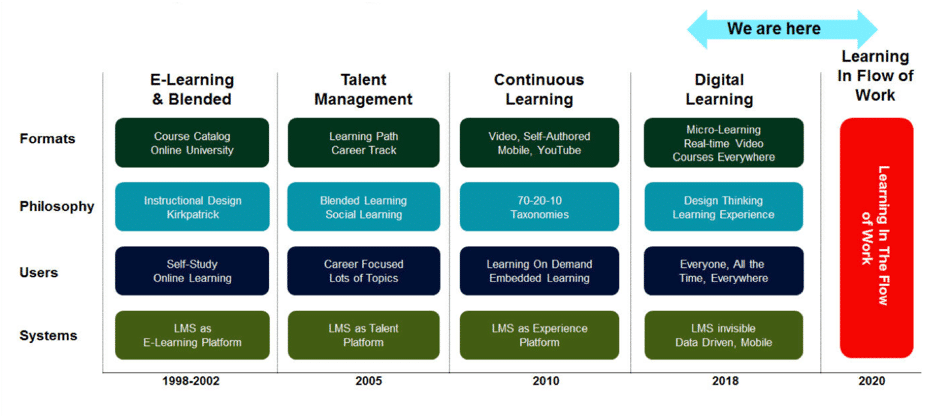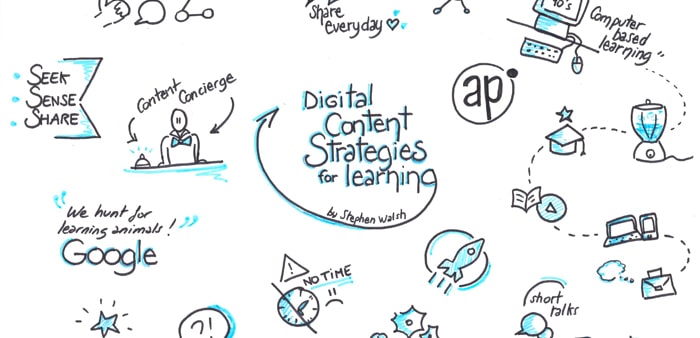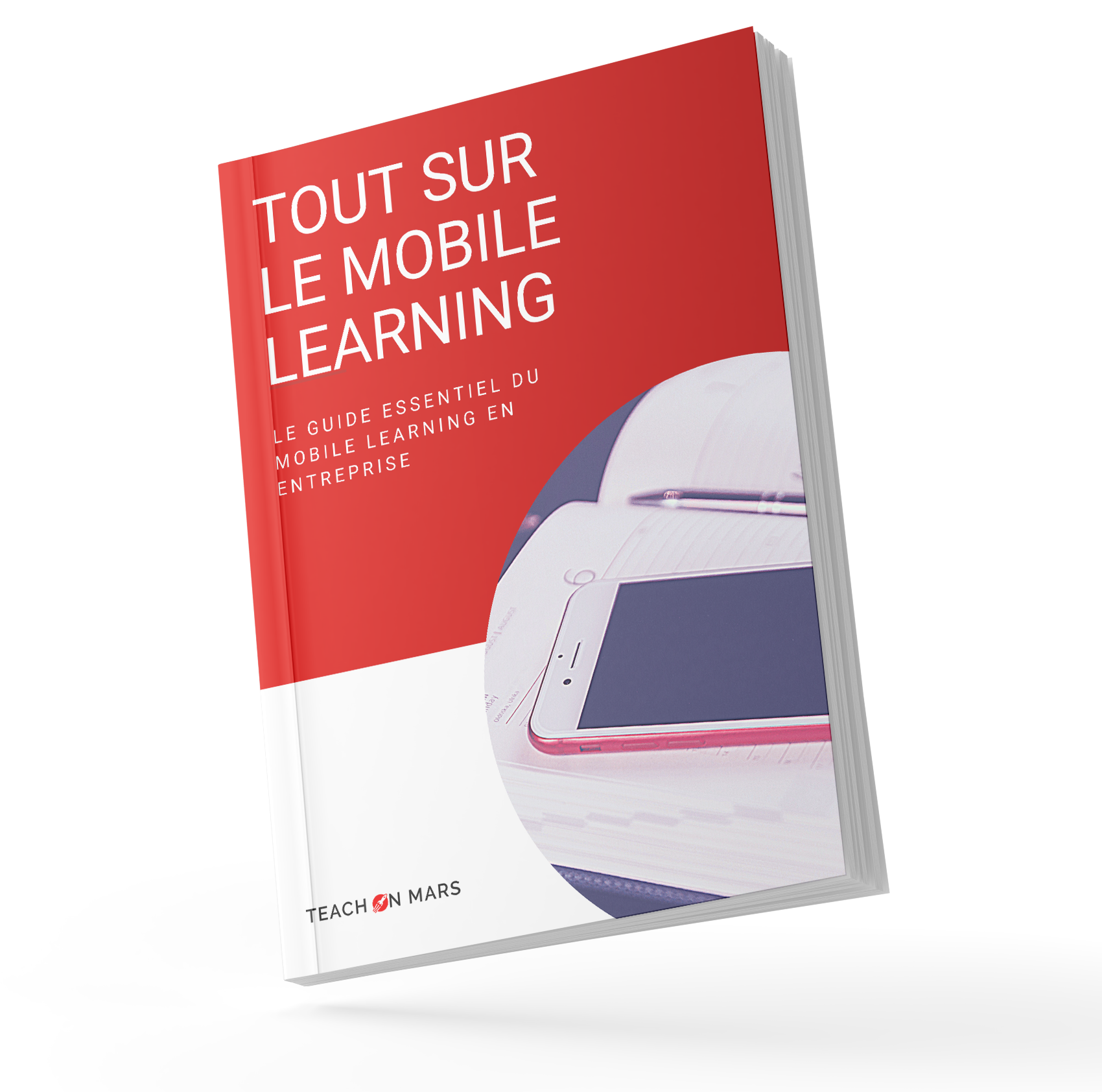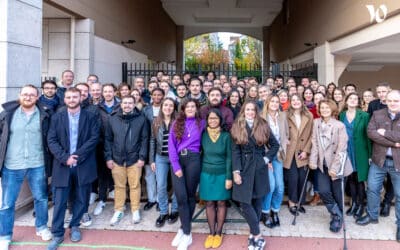At the second edition of the Mobile Learning Summer University, Stephen Walsh, co-founder and CEO of Anders Pink was there to lead the panel discussion “Bespoke, off-the-shelf or content curation? Constructing a chart-topping digital learning offer!” Stephen presented the learning formats that allow content curation and their potential features. Find out more in the verbatim account of his talk that follows.
Opportunities and challenges in the learning market
How has the learning industry evolved over time? What challenges and opportunities can we expect as professionals in the industry?
A recent study by Josh Bersin traces the last 25 years of our industry and very much reflects my personal journey in the world of e-learning.

In the mid-90s, when e-learning was born, what we mainly did was build courses, regardless of the requirement. For a long time, e-learning was based on an academic and university approach. Courses and assessments were uploaded onto LMS platforms without the inclusion of any multimedia content at all. At that time, before YouTube, videos were expensive, bandwidth was usually insufficient and smartphones didn’t really exist yet. Developments in our industry made us realise that we had to leave academic learning behind and adopt a blended learning approach. Blended learning consists of combining conventional courses with other methods of learning. But it’s also about using learning management systems (LMS) for strategic management, and not only for the inclusion of e-learning.
It was only from 2010 onwards that everything changed. With smartphones, we now had a hugely powerful learning device in our pockets. We were using it for social media purposes and for watching videos and so on. This allowed a switch to the learning on demand era. We now have microlearning and we have access to everything, all the time and everywhere. The limits imposed by courses and CD-ROMs have disappeared.
Different technologies and various design processes offer a vast array of possibilities that can be confusing as there are now so many ways of tackling a learning or development issue. We need to think carefully about strategy, whatever the requirement is, and to try and make the LMS even more invisible. It’s no longer a place you go to, take classes and leave; it’s more like a hub devoted to continuous learning. This means we can educate learners on a permanent and ongoing basis.
Microlearning vs. Macrolearning
Today, we’ve moved away from providing courses and now break content down into small units; in other words, microlearning versus macrolearning. For example, if I need help right away and only have 3 minutes, all I need is my smartphone to view a PDF file or TED talk, regardless of the format. I decide what’s useful for me on the spur of the moment, and this is what we call microlearning.
Macrolearning can still be useful however. We may need to develop a specific skill such as coding or a new language. In this case, the need isn’t immediate, we’ll devote time to it and it will require a linear and structured multimedia format.
Our strategies should therefore include both approaches.
Learning by doing
According to a survey conducted in the UK by Jane Hart which asked people in their workplace to rate different forms of learning from “Very important” to “Not important”, the top result for the most valued format was learning on the job. This was followed by knowledge sharing within the team, and then web searches. At the bottom of the list, the learning formats considered less useful included classroom learning, conferences and other professional events, and e-learning.
We need to bear in mind that learners want formats that are short, don’t interrupt their workflow and are easy to share. We should stop producing formal, linear, fixed content and support them by offering useful content. An interesting statistic was published in the United States in 2017: “What is the average time a knowledge worker believes they can devote to training each week?” The answer is just 24 minutes a week. The other problem with time is that we waste a lot of it looking for relevant information. A few years ago, an IDC survey found that people spent an average 9.5 hours a week looking for information, without even necessarily finding it.
If you went to university 25 years ago, nothing you learned at that time is relevant today. The manuals are all out of date, everything you learned and that was cutting edge at the time, is completely outmoded. This phenomenon applies to all our past knowledge.
Taking responsibility for our learning
We’ve all learned a lot of things over the years. It’s not about knowing what you learned yesterday, but what you’ll learn today and tomorrow to keep your knowledge current.
In 2017, The Economist published a report which argued that lifelong learning is an economic imperative. This isn’t just a good idea, it’s essential for keeping our place in the job market. And the younger you are, the more important it is. 61% of those under 30 agreed that they will need to learn new skills throughout their lives.
The world is getting a little more complex every day and we need to ask how we can prioritise information and deal with this complexity. To keep your learning pace in synch with the pace of change and competition, we want everyone to be responsible for their learning. According to the statistics I mentioned earlier, most content is irrelevant, and it would take an enormous amount of time to first find it and then filter it. So if people want to drive their own learning and be independent, the service they receive today isn’t optimal. We can do better!
Can we become content “curators” or how to select content for continuous learning while learners work at the same time?
This involves three steps. If you take away just three words from today, they should definitely be “seek, sense and share“. These three words briefly describe the concept of content curation.
- “Seek” often involves using Google with tools and algorithms for effective searches.
- “Sense” is primarily about understanding something yourself, being able to assimilate it, first for yourself and then for others.
- “Share” is about putting content in a place where others can use it. This could be through an app, in an email, on Slack or on your intranet. Wherever you are, don’t limit yourself to a single place. Choose the right place, then create a routine. Do this on a daily basis.
This is what we do at Anders Pink. We have a tool that allows us to filter content which we then integrate into learning systems. This is the reason for our partnership with Teach on Mars. By integrating this filtered and updated content into the Teach on Mars platform, learners can keep up to date with any topic, everywhere and all the time.

Diplômée d’école de commerce et passionnée par les innovations du numérique, Noémie a enfilé son scaphandre et rejoint l’équipe Teach on Mars au poste de Content Manager. Elle intervient en marketing et événementiel tout en contribuant à Teach on Earth, une initiative sociale et environnementale.





